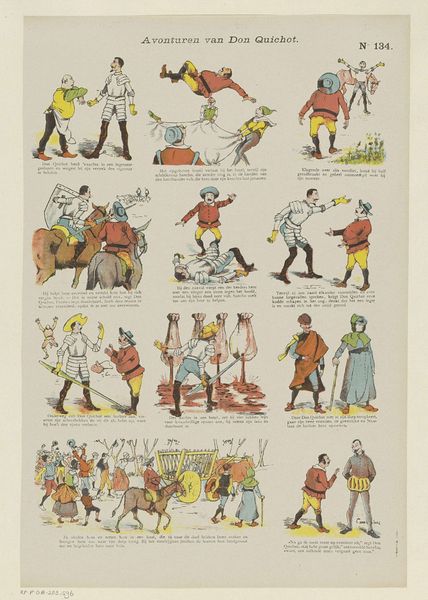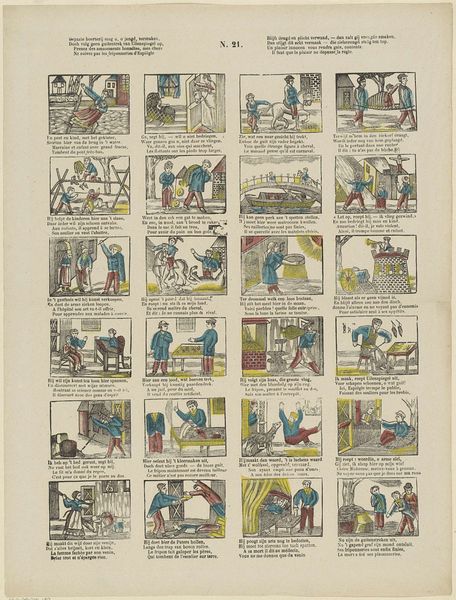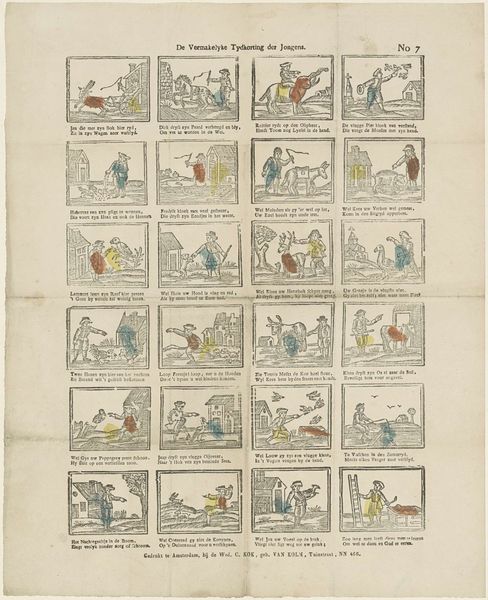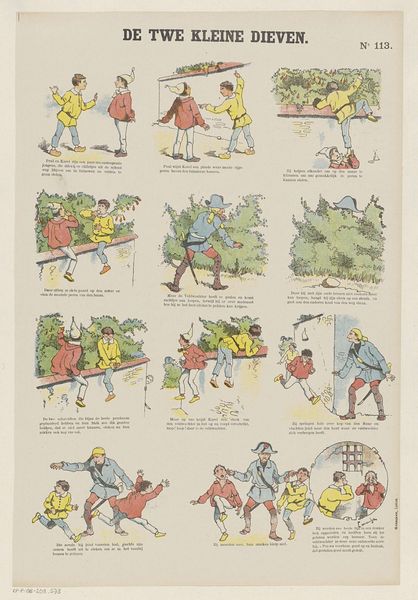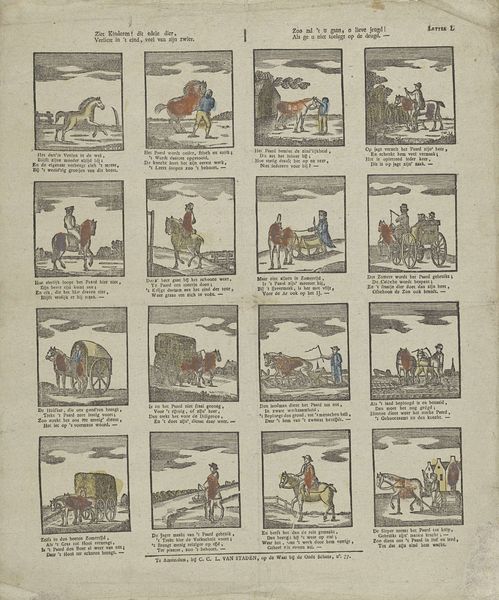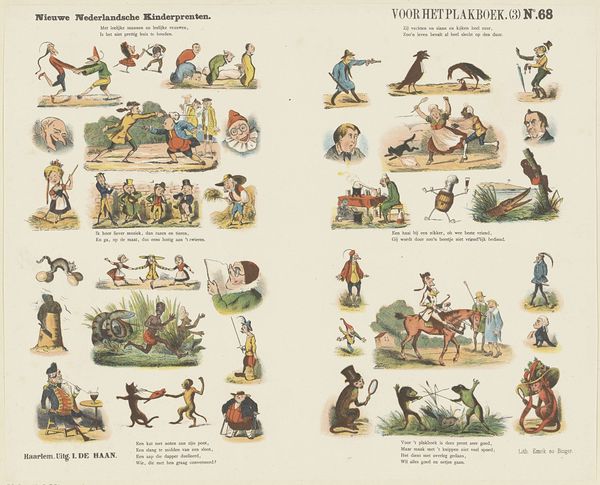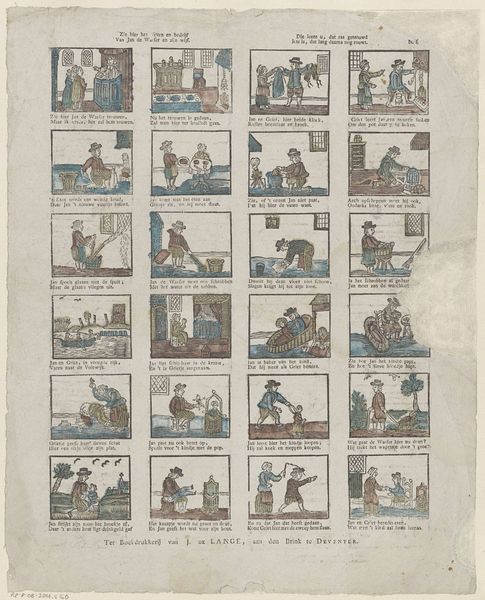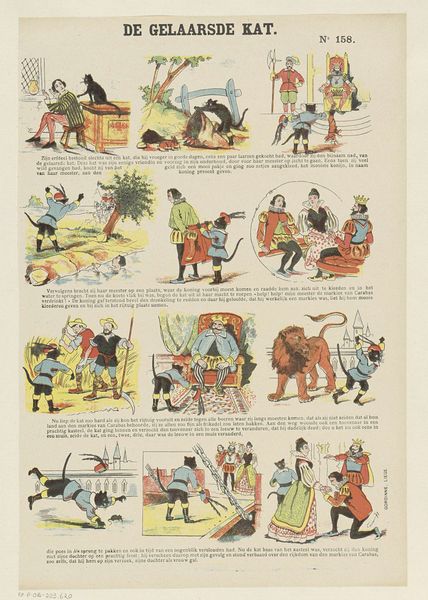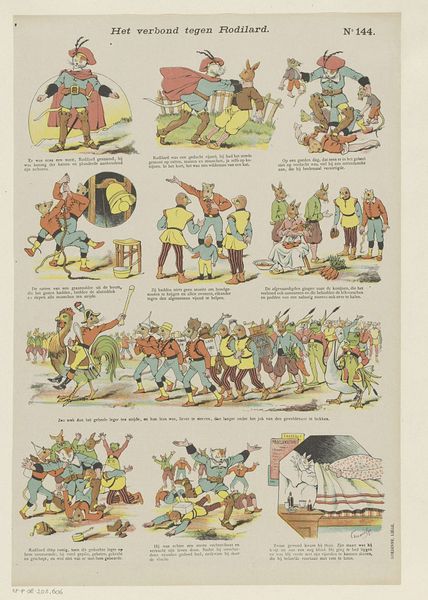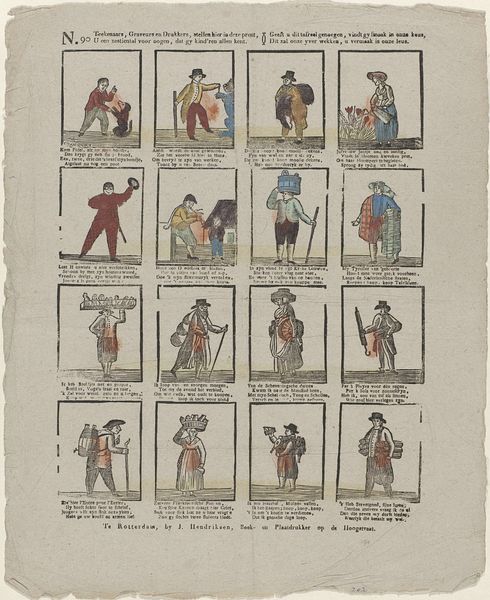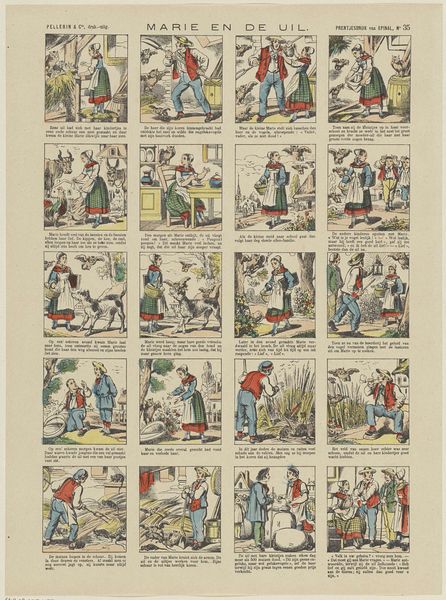
Dimensions: height 423 mm, width 344 mm
Copyright: Rijks Museum: Open Domain
Editor: This is "Verschillende dieren en figuren," a lithograph print made between 1837 and 1868 by G.N. Renner & Co. It feels almost like a page from an old textbook, showing scenes of everyday life. What symbolic weight do you think these images would have held for viewers at the time? Curator: It’s fascinating how these seemingly simple images create a tableau of cultural memory. Each vignette carries layers of meaning, reflecting societal values and archetypes. The caravan, for example, likely symbolized trade and adventure. The goat, Ziege, can speak to resilience or stubbornness. The way each scene is presented reinforces certain behaviours. Editor: So, are you suggesting these images might be more than just descriptive? Curator: Absolutely. Consider the fox with its prey—"Fuchs mit Beute." Is it simply a scene, or does it subtly reinforce a sense of justified opportunism? How does it influence those exposed to it during childhood? Do you think a child looking at that might internalize something about power dynamics or survival? Editor: I never thought about it that way, I just saw them as images showing regular life! What about the one with the cats? Curator: "Katzen" offers a glimpse into the domestic sphere and might symbolize comfort, familiarity, or even trickery, depending on cultural associations. The juxtaposition of these diverse images invites us to examine how visual symbols collectively construct our understanding of the world. Perhaps this explains cultural understanding and expectation better than words might. Editor: It's interesting to see how everyday life becomes a source of encoded values when looking through the lens of cultural symbols. Thank you! Curator: My pleasure. It’s always rewarding to unravel the complex web of meaning embedded in visual imagery and better see our cultural past.
Comments
No comments
Be the first to comment and join the conversation on the ultimate creative platform.
